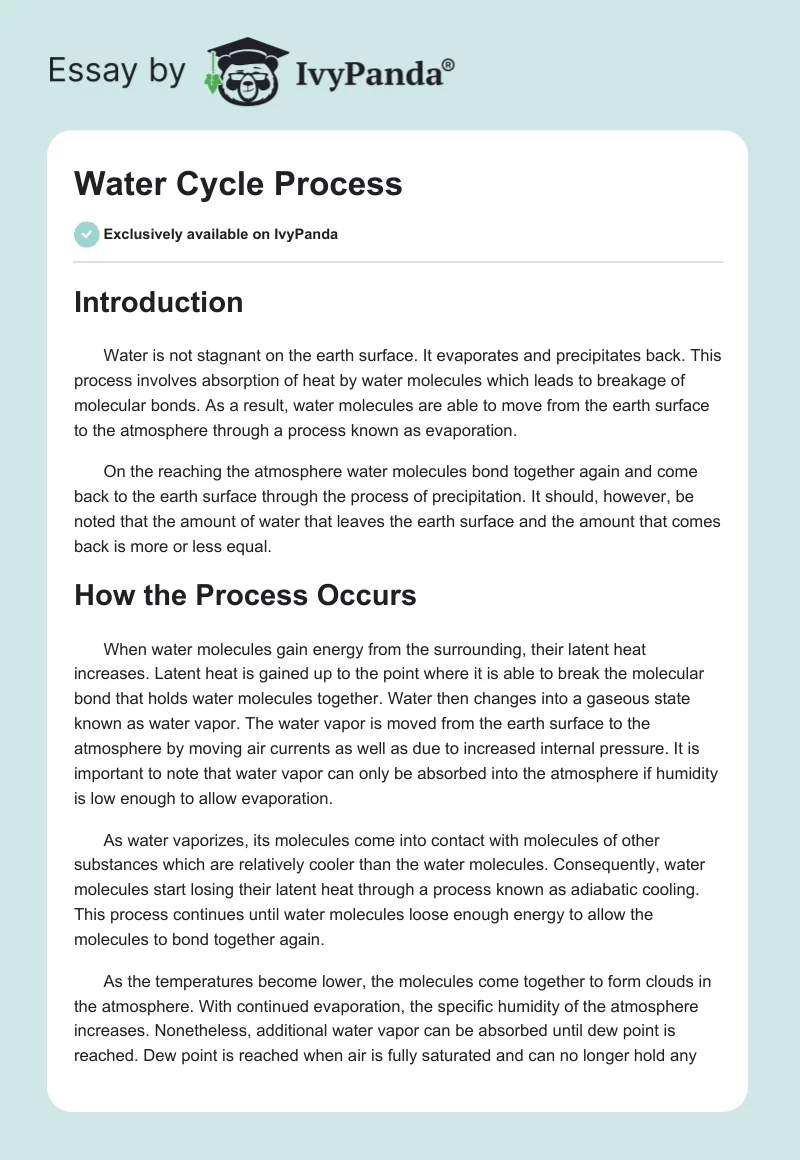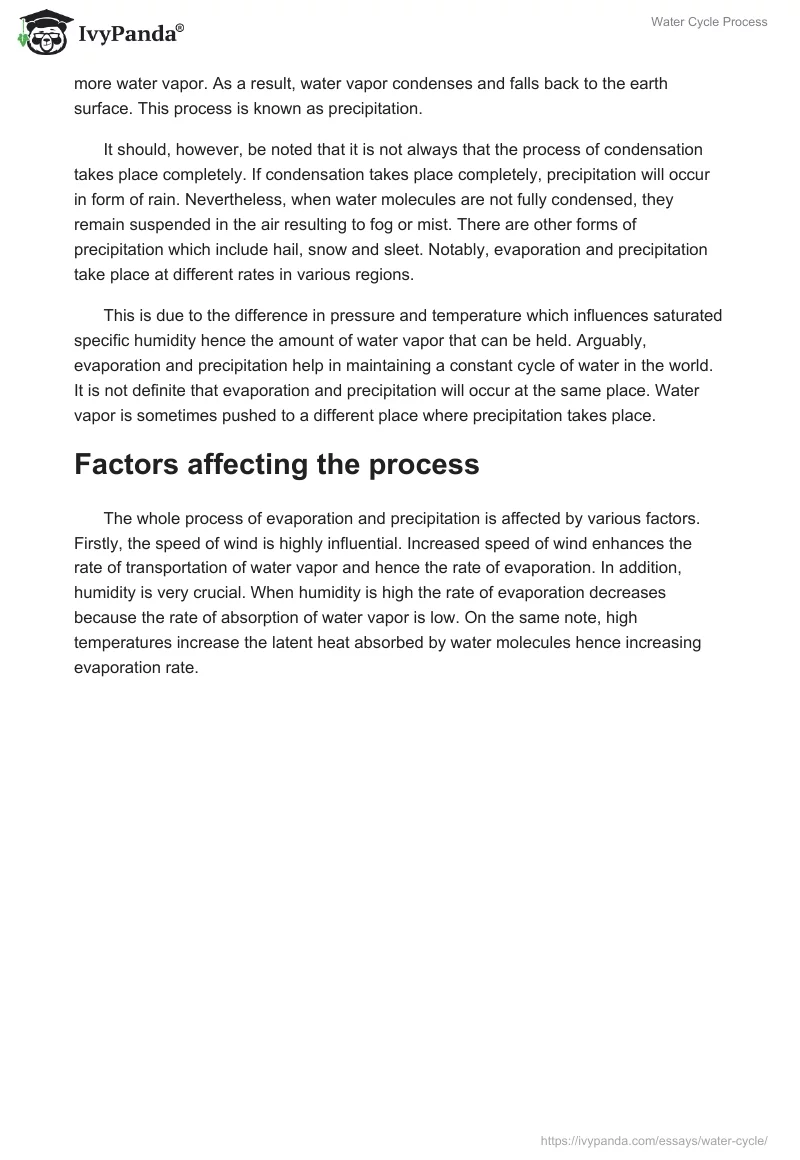Introduction
Water is not stagnant on the earth surface. It evaporates and precipitates back. This process involves absorption of heat by water molecules which leads to breakage of molecular bonds. As a result, water molecules are able to move from the earth surface to the atmosphere through a process known as evaporation.
On the reaching the atmosphere water molecules bond together again and come back to the earth surface through the process of precipitation. It should, however, be noted that the amount of water that leaves the earth surface and the amount that comes back is more or less equal.
How the Process Occurs
When water molecules gain energy from the surrounding, their latent heat increases. Latent heat is gained up to the point where it is able to break the molecular bond that holds water molecules together. Water then changes into a gaseous state known as water vapor. The water vapor is moved from the earth surface to the atmosphere by moving air currents as well as due to increased internal pressure. It is important to note that water vapor can only be absorbed into the atmosphere if humidity is low enough to allow evaporation.
As water vaporizes, its molecules come into contact with molecules of other substances which are relatively cooler than the water molecules. Consequently, water molecules start losing their latent heat through a process known as adiabatic cooling. This process continues until water molecules loose enough energy to allow the molecules to bond together again.
As the temperatures become lower, the molecules come together to form clouds in the atmosphere. With continued evaporation, the specific humidity of the atmosphere increases. Nonetheless, additional water vapor can be absorbed until dew point is reached. Dew point is reached when air is fully saturated and can no longer hold any more water vapor. As a result, water vapor condenses and falls back to the earth surface. This process is known as precipitation.
It should, however, be noted that it is not always that the process of condensation takes place completely. If condensation takes place completely, precipitation will occur in form of rain. Nevertheless, when water molecules are not fully condensed, they remain suspended in the air resulting to fog or mist. There are other forms of precipitation which include hail, snow and sleet. Notably, evaporation and precipitation take place at different rates in various regions.
This is due to the difference in pressure and temperature which influences saturated specific humidity hence the amount of water vapor that can be held. Arguably, evaporation and precipitation help in maintaining a constant cycle of water in the world. It is not definite that evaporation and precipitation will occur at the same place. Water vapor is sometimes pushed to a different place where precipitation takes place.
Factors affecting the process
The whole process of evaporation and precipitation is affected by various factors. Firstly, the speed of wind is highly influential. Increased speed of wind enhances the rate of transportation of water vapor and hence the rate of evaporation. In addition, humidity is very crucial. When humidity is high the rate of evaporation decreases because the rate of absorption of water vapor is low. On the same note, high temperatures increase the latent heat absorbed by water molecules hence increasing evaporation rate.


